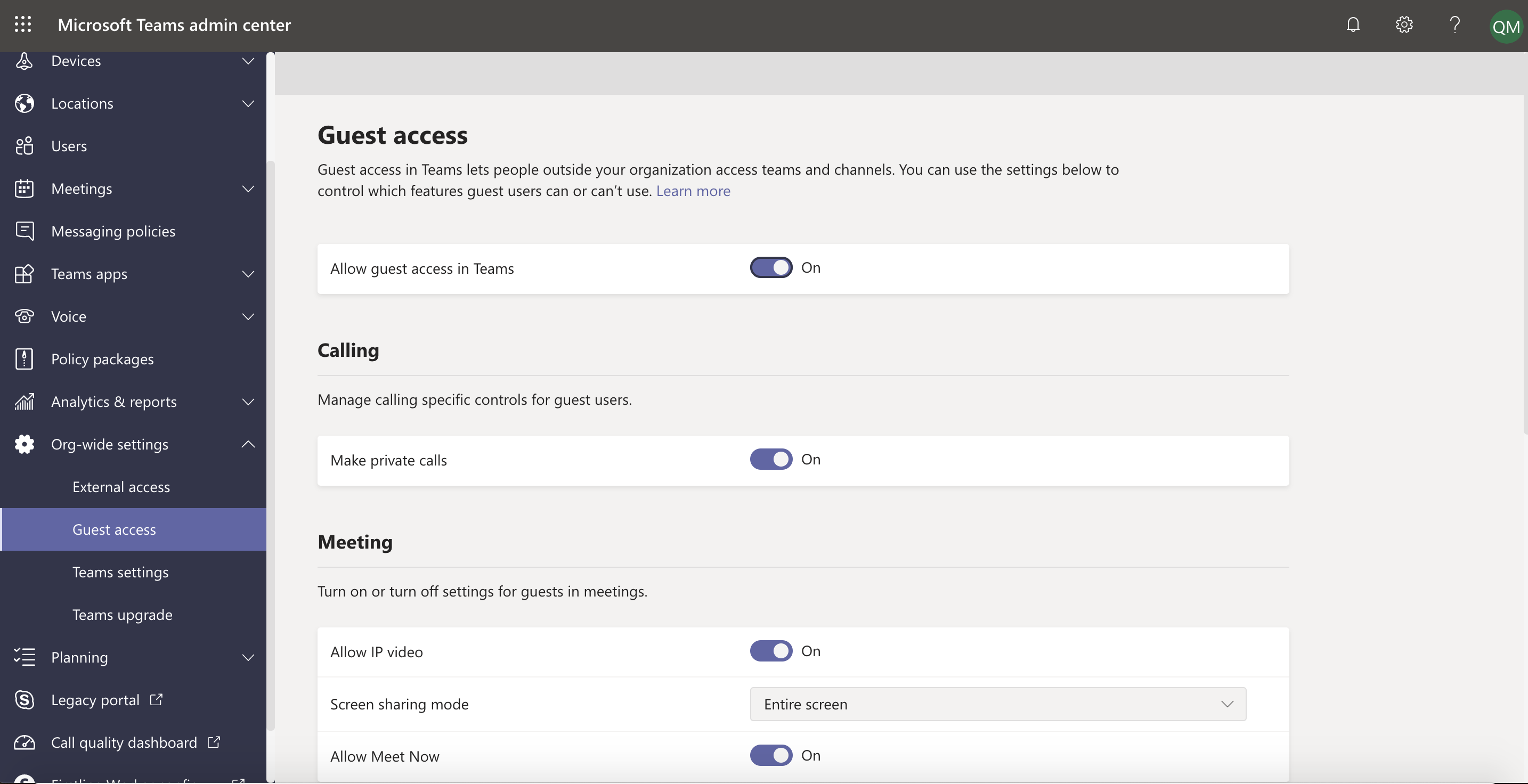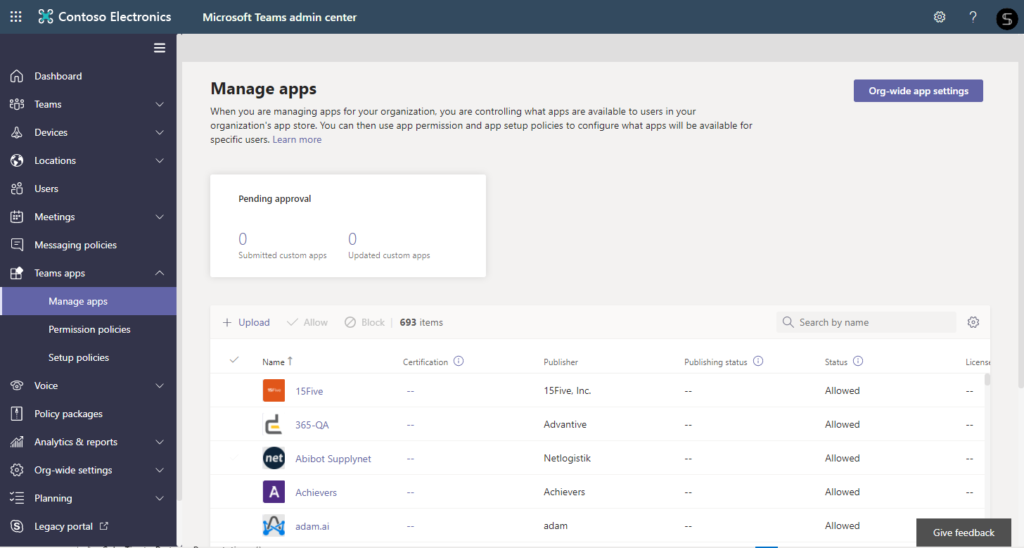Following our series of articles on Microsoft Teams Adoption Strategy, where we described Vision, Sponsorship and Use Cases as key elements of successful adoption, today we will focus on establishing the right Governance policies. Let’s have a closer look at what constitutes governance and what types of governance should be established in the organization.
Defining Microsoft Teams Governance
From a project management perspective, Governance means controlling, managing and administering company’s projects for developing the business and driving value.
When it comes to transforming the way the organization works, different types of governance need to be established to ensure the success of the project, its alignment with the company’s business strategy and technical efficiency. Therefore, you need to make sure you have an effective system of Project Management, Executive and IT Governance that would be in charge of achieving success in different aspects of the transformation.
Finally, you will need to establish Microsoft Teams Governance, or compliance strategy to determine how Teams will function in your organization.
Project Management Governance
It incorporates all the key elements for a successful implementation of a project.
Its goal is to track success indicators, arbitrate the project, remove roadblocks, build internal and external communication plans and also share best practices.
Executive Governance
Responsible for aligning the project’s objectives with organizational needs and corporate vision. Its objective is to establish goals for the project, build an Adoption Plan, do follow-ups, create a Communication and Training Plans, set and prioritize business scenarios, share best practices as well as manage Champions network.
IT Governance
It’s a process that ensures control and effective use of informational technology in order to achieve organizational goals. It regulates deployment strategies and a roadmap, operates User Support Center, tracks incidents and escalation processes as well as manages risks and data associated with information technology.
Microsoft Teams Governance
Establishes the rules of use of Microsoft Teams from both administrator’s and end-users’ sides. It includes governance around teams creation, membership, naming convention, audience targeting, data security and team life cycle.
Now that we have established the types of governance that you need to determine for your Microsoft Teams Adoption Plan, let’s discuss each of them in detail.

Project Management Governance
Project Governance ensures the project runs smoothly, within the set budget and deadlines and complies with the customers’ requirements. It’s a decision-making framework which determines who is responsible for which activities and deliverables in the organization.
Project Governance involves:
- Project Manager
- Sponsors
- Success Owners
- Champions
- Office 365 partners
It encompasses such areas as policies, responsibilities, processes, functions, regulations and procedures.
Project Governance covers all the key elements for a successful project implementation. However, they have to be tailored for each company individually to address their specific needs.
On the level of determining project’s alignment with organizational governance these elements include project governance framework, roles and responsibilities and stakeholder engagement and communication.
When it comes to project’s implementation and management the key aspects that project manager should take charge of are arranging meetings and revising reports, performing risk and issue management, and ensuring viabilityand project management control process.
The agenda for project meetings may cover the following topics:
- Monitoring KPIs
- Removing roadblocks
- Prioritizing key activities
- Preparing communication plan
- Brainstorming and sharing ideas and best practices.
Project Governance covers three organizational components:
Structure – describes the organization itself, not just the project. The company’s structure has to support and promote the transformation with all the key stakeholders actively engaged in the project implementation and senior leadership involved in defining the vision and strategy.
People – selecting the right people for the project management committee can determine success of the project. The membership should depend on project’s objectives and business scenarios, but normally include sponsors, success owners, project manager, champions, and office 365 partner.
Information – understanding the process and information sharing is key for Teams roll-out. Preparing reports, receiving feedback, reporting issues and risks as well as creating business scenarios are among key documents managed by project managers.

Executive Governance
Executive Governance, as understood from the name of the term, incorporates control over the project on the executive level.
The role of executive governance is to establish the project vision and determine strategies in order to achieve it. It covers such activities as defining and prioritizing business scenarios and other initiatives, deciding their order and when they should be carried out, executing them with the right tools and programs, and making sure the organization receives maximum value from the project roll-out.
Moreover, organization’s executives also assign ownership of processes and activities to different stakeholders and control their performance. Additionally, it controls the funds and allocates them to different projects to optimize the budget distribution.
The senior management in charge of the project should hold regular meetings once a month or every three months, depending on the stage of adoption and organizational needs. The purpose of these meetings will be to identify roadblocks, track progress as well as share feedback on what has already been achieved.
Other topics on the meetings’ agenda may include:
- Defining goals
- Following up on adoption process
- Communication and Training Plan
- Sharing best practices
- Monitoring adoption indicators
- Setting and prioritizing business scenarios
- Managing the Champions Network
The key roles that have to be involved in the executive governance are:
- Executive Sponsor
- Success owner
- Project Manager

IT Governance
With the evolution of technology and widespread use of digital collaboration tools in the world of work, companies all over the world rely on IT to sustain their business growth, foster innovation and transformation. Therefore, IT Governance has become an essential part of any organization.
Gartner Glossary describes IT Governance as processes that ensure efficient use of IT to empower the organization in order to achieve its business objectives. Its purpose is to create value for the organization by implementing IT projects in line with company’s business needs.
IT Governance involves:
- CIO
- IT Sponsor
- IT Project Managers
- User Support Teams
- Training organizer
- Success owners
- IT partners.
In Microsoft Teams Adoption Strategy, IT Governance covers the following aspects:
IT Alignment – making sure the investments in Microsoft Teams Adoption are in line with the organization’s business strategy.
Deployment Planning – defining the scope of the project, approach, schedule and execution.
Value Delivery – ensuring ROI of the project throughout its life-cycle.
Risk Management – protecting business operations from potential technical failures.
Resource Management – optimizing IT resources across the organization.
Performance Measurement – demonstrating how the business can benefit from the use of Teams.
The topics for meetings’ agenda may include:
- Establishing the Roadmap
- Defining the Adoption Strategy
- Preparing Training for end-users
- Tracking failures
- Setting up the escalation process
- Executing Data Governance
IT Governance challenges
With the constant upgrading of software and digital transformation within the organization, IT Governance is facing new challenges that it has to address, such as:
1.How to implement new use cases for the existing collaboration tools?
2. How can we secure all the current operations running in the company while using Teams?
3. How to make sure the end-users are satisfied with the digital collaboration solutions?
4. What rules for data governance and use of new services should be established?
Some of the possible solutions might be to:
1. Review internal IT organization (monitoring, help desk, major incident and change management).
2. Conduct training and communicate with the staff.
3. Ensure the readiness of the support teams.
4. Establish your own champions network.

Microsoft Teams Governance
This type of governance directly concerns the use of Microsoft Teams by the end-users and administrators. At the experimentation stage, before starting the Teams rollout at scale, you should organize Teams adoption with a limited group of individuals that will help you determine your strategy in the long run.
Think about the business scenarios that you will use at this stage and who you want to be involved in the process. Make sure you select the right stakeholders that will be interested in becoming early adopters and will give you a valuable and regular feedback.
You should make a series of decisions concerning the use of Microsoft Teams such as:

Teams creation
At the experiment stage you can restrict the teams creation to your project team and early adopters to analyze their behavior. This information will help you develop the Governance strategy for further Teams deployment at scale in your organization.

Naming Conventions
You can organize an interactive onboarding process for your early adopters and allow them to select their own name for teams. This will give you insights into how your employees name their work and will help you in implementing a broad scale naming convention.

Guest Access
You will probably want to test the capability of inviting guests to Teams to communicate with external stakeholders, depending on the nature of your company’s activities. Try granting guest access to specific individuals in your experimentation team and evaluate the results.

Apps
The best practice will be to enable incorporating first-party apps in the Teams environment. Depending on the business scenario that you are addressing you can also allow creating tabs with specific third-party apps.

Meetings
In order to gain more value from your experimentation, you can enable video chats to foster collaboration and information sharing in your team. Consult your tech team first to ensure the technical readiness and the state of voice services before enabling audio conferencing.

Data security
Secure the data that is shared in your teams by classifying them in accordance with data regulations. You can coordinate this work with your technical team.

Data retention
Determine your policies regarding data storage according to your company’s business data archival requirements.

Which Microsoft Teams Governance should you apply?
In order to determine which type of governance you should apply in your organization you should first define what phase of transformation that your company is currently in:
Prepare change
This is the initial phase where you are creating awareness about the upcoming organizational change.
At this stage you should organize a workshop with your project teams, executives and business and IT leaders. Afterwards you will have a shared understanding of the project’s vision and strategy, a collective agreement on the objectives and commitments to actions, roles, responsibilities and timeline.
Manage change
At this stage you should form Project Governance. It consists of:
- Executive Sponsor, who provides high-level stewardship and removes roadblocks;
- Project Leader, who manages planning, implementation and closing of the project as well as resolves issues when they appear;
- Core Team, who provides leadership for day-to-day activities in support of the project.
- Steering Committee, that consists of senior management of the company’s business departments,
- Operational Committee, that includes the project team and Champions also constitute Project Governance.
Steering Committee members hold meetings on a monthly basis and make strategic decisions around the project. At the same time, Operational committee gathers weekly to decide on the operational issues and perform follow-ups.
Change organization
The final phase, at which point you establish “Adoption and Innovation Center” to offer continuous adoption. The adoption doesn’t stop soon after the launch of the project. Given that technologies are constantly evolving you will need to make sure your employees stay up to date with the newest advancement. The “Adoption and Innovation Center” will help them get the necessary training and knowledge to constantly improve their way of work.
The Change Board will be in charge of the Center and will offer Elite Program, that will provide information on the latest updates, Training and access to Adoption capabilities, advice and support as well as best practices.
When it comes to Microsoft Teams Governance, you should remember that each of your business departments require their own governance policies, since their functionalities have different impact on the organization and distinct visibility.
On the level of personal use of Teams, the governance can be more flexible, while for more business-impactful capabilities the rules should be stricter to avoid potential security issues.
Keep in mind that even for personal sites governance rules are critical for establishing access rights and quotas at least.

Microsoft Teams Governance with Templates
Oftentimes organizations struggle with executing the right Governance policies for Microsoft Teams by either giving too much freedom to end-users and thus impacting the order and efficiency or by allocating too much control to the administrator and as a result restricting the use of many capabilities for employees.
In addition, if your organization has to regularly create new teams, you add workload on your IT department and loose time on repetitive tasks.
Creating a Microsoft Teams Template catalog that allows you to create teams based on the templates with already established Governance rules such as Naming Convention, Security and Audience Targeting, as well as cloned channels, tabs and files.
Microsoft Teams Governance Policies at the template level
At nBold, our mission is to improve collaborative processes across the organization, where IT Governance supports both the organization’s and end-users’ needs.
In order to help organizations enhance their digital collaboration, we created advanced Teams capabilities that will take the collaborative processes in your company to the next level.
You can further develop your Naming Convention by giving your team Description, Welcome Message and Dynamic Naming Convention.
Additionally, you can establish Approval Workflow, which allows you to choose any person in your organization and delegate an approval, talk to requester and reject teams’ creation, accordingly.
Manage Teams Membership by enforcing teams privacy. You are able to control who can join your new team by adding pre-approval or validation process.
You can choose whether to make a team public or private, giving the team owner total control of Teams Privacy.

Furthermore, you can choose to assign Permanent Members and Owners to your teams, saving you time and empowering security policies.
Finally, you are able to establish Audience Targeting. You can set up the Targeting Rules, based on the Azure AD Attributes and let your employees create a team. As a result, your end-users can use a specific Template, depending on their location, email, or even language and more.
All these capabilities will save your organization a lot of time on performing repetitive processes, enhance end-user experience by alleviating the need to be technology-savvy when creating teams, and ensure your company’s data security policies are deployed in all the newly created teams.
Now you know what types of Microsoft Teams Governance you need to establish in order to succeed in your Teams Adoption Strategy.
Stay up to date and learn more about the key elements of Microsoft Teams Adoption.
